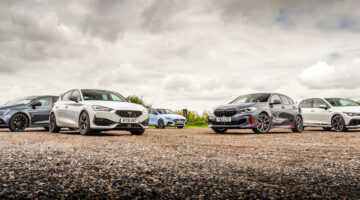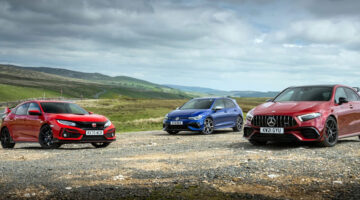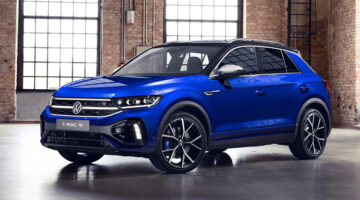We swap over. The driving position is low, sporty and the cockpit uncluttered, and I immediately feel at home. I start in EV mode, and move away. The initial throttle response is sharp and instant – the beauty of electric motors is that max torque is available straight away, so that around town the XL1 feels peppy and responsive.
Immediately though, my thoughts turn to the steering. So light is the XL1, and so thin the tyres that power steering isn’t needed. Consequently, the feedback through the small wheel is more communicative then just about anything else on the market today. It’s direct, organic, analogue and beautifully textured. For Andreas and the team I’m sure it was a decision based on saving weight, but my mind is immediately thinking how great this would feel in a sports car.
The specially developed Michelin Energy Saver tyres really are thin – 150/80 R15s at the front and 145/55 R16s at the back. I know from previous experience in a Morgan Three Wheeler that when the car is lightweight, thin tyres don’t mean you skitter everywhere. We don’t have the opportunity to really push the pace today, confined as we are to the city, but Volkswagen took a bunch of European journalists on a route through the Alps in XL1s, and the feedback was that it’s properly chuckable. It does, after all, boast rear-wheel drive and 50:50 weight distribution.
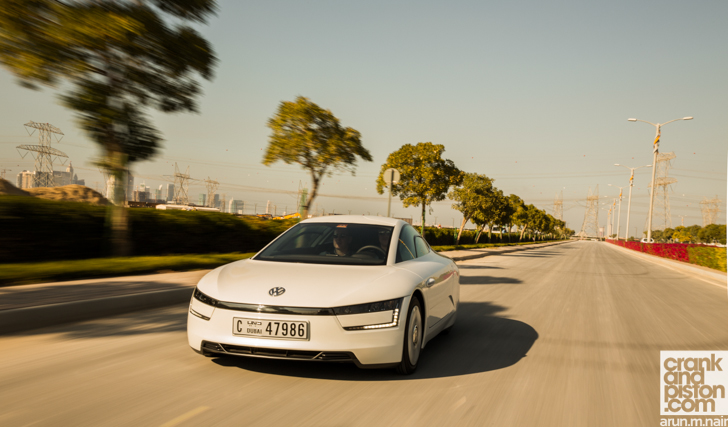
Certainly, here in Dubai, the XL1 feels nimble and agile. I love the steering and it whips around roundabouts without and concerns at all. But what of the power train? Well, after that initial burst of electric torque, it feels a touch sluggish. 0-100kph comes up in 12.7 seconds, but I have to remind myself that the car is built for economy. In electric mode I expected it to be silent, but once any sort of speed is reached, it’s far from that. In the pursuit of weight saving, most sound insulation is absent, so there are plenty of noises to hear – road noise from the tyres, whirring from the electric motor behind my head. What’s missing is wind noise – with such a slippery body, and no wing mirrors, that buffeting that one normally expects from the base of the A-pillars never materialises.
I flick the gear lever into S, which brings the diesel engine online. The two-cylinder clacking isn’t really attractive – at idle it sounds uncannily like the resting noise of the alien from Predator. Volkswagen is planning to introduce this powertrain, or a close variant of it, into the Golf within the next year or so, but I’d imagine they’ll add a bit more insulation by then. On acceleration the clacking blurs into an uninspiring, hoarse rattle. But having said all that, it’s not loud enough to intrude on conversation. And again, as I keep reminding myself, this is at the extreme end of the vehicular spectrum, so to judge it by benchmarks set by vehicles aiming for very different things would be unfair.
We pootle around town, stopping regularly so that snapper Arun can grab pictures. And everywhere we go, the crowds appear. In Downtown Dubai, people completely ignore the Rolls-Royce Drophead parked just a few spaces away and huddle around, camera phones snapping. Motorists drive even more terribly than usual around us as they try and grab a shot. At the fuel station, where we stop to get some food, passers by run over to ask what the car is. We don’t need to fill up at the fuel stop, by the way – a 10-litre tank of diesel will last some 500km. The display on the dashboard shows we’ve consumed just 0.8L/100km. Remarkable.
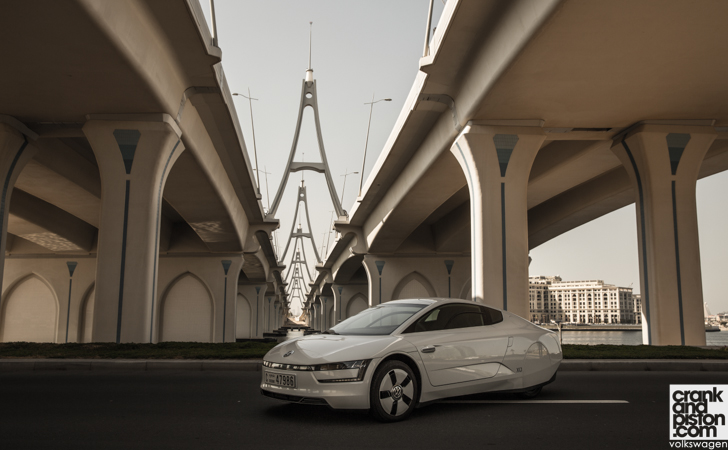
Later, I’ll discover that the crown prince of Dubai (or at least, someone pretending to be him) spotted us and put a picture up on his Facebook page. This, really, is part of why the XL1 exists. It’s expensive to buy, but even at that price Volkwagen loses money on each one. But they can write that off against PR exposure, both through the technological advances and in the sheer interest people have in it.
I leave the XL1 very intrigued. Perhaps its my thrill-seeking nature or the fact that eco-cars don’t really register on the radar much in the Middle East, but I look at the XL1 and see elements of the future of enjoyable motoring. Volkswagen is sharing its work on the XL1 with the rest of its portfolio – the likes of Porsche, Audi and Lamborghini. Relatively affordable carbon monocoques, incredible steering feel, lightweight vehicles and agile handling? Consider me excited.
– FULL GALLERY AVAILABLE HERE – CLICK –
Awesome selection of wallpapers available HERE – CLICK –
| Volkswagen | XL1 |
|---|---|
| Engine: | Diesel / inline 2-cyl / 800cc / electric motor |
| Power: | 68bhp |
| Torque: | 103lb ft |
| Transmission: | Seven-speed DSG, rear-wheel drive |
| Front suspension: | Double wishbone, coil springs, gas dampers |
| Rear suspension: | Double wishbone, coil springs, gas dampers |
| Wheels: | 15-inch front, 16-inch rear |
| Tyres: | 150/80 R15 front, 145/55 R16 rear, Michelin Energy Saver |
| Weight (kerb): | 795kg |
| 0-100kph: | 12.7sec |
| Top speed: | 160kph |

